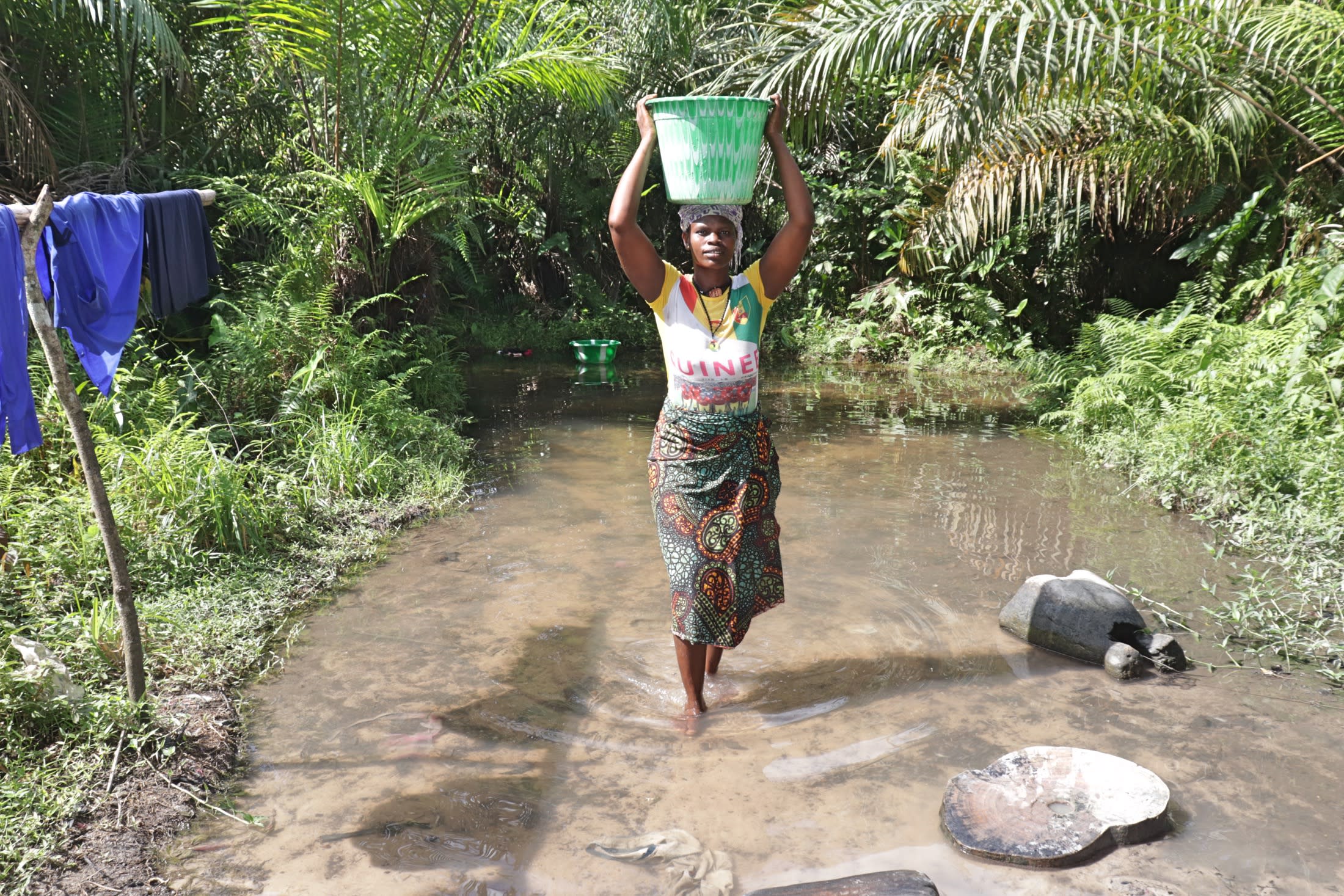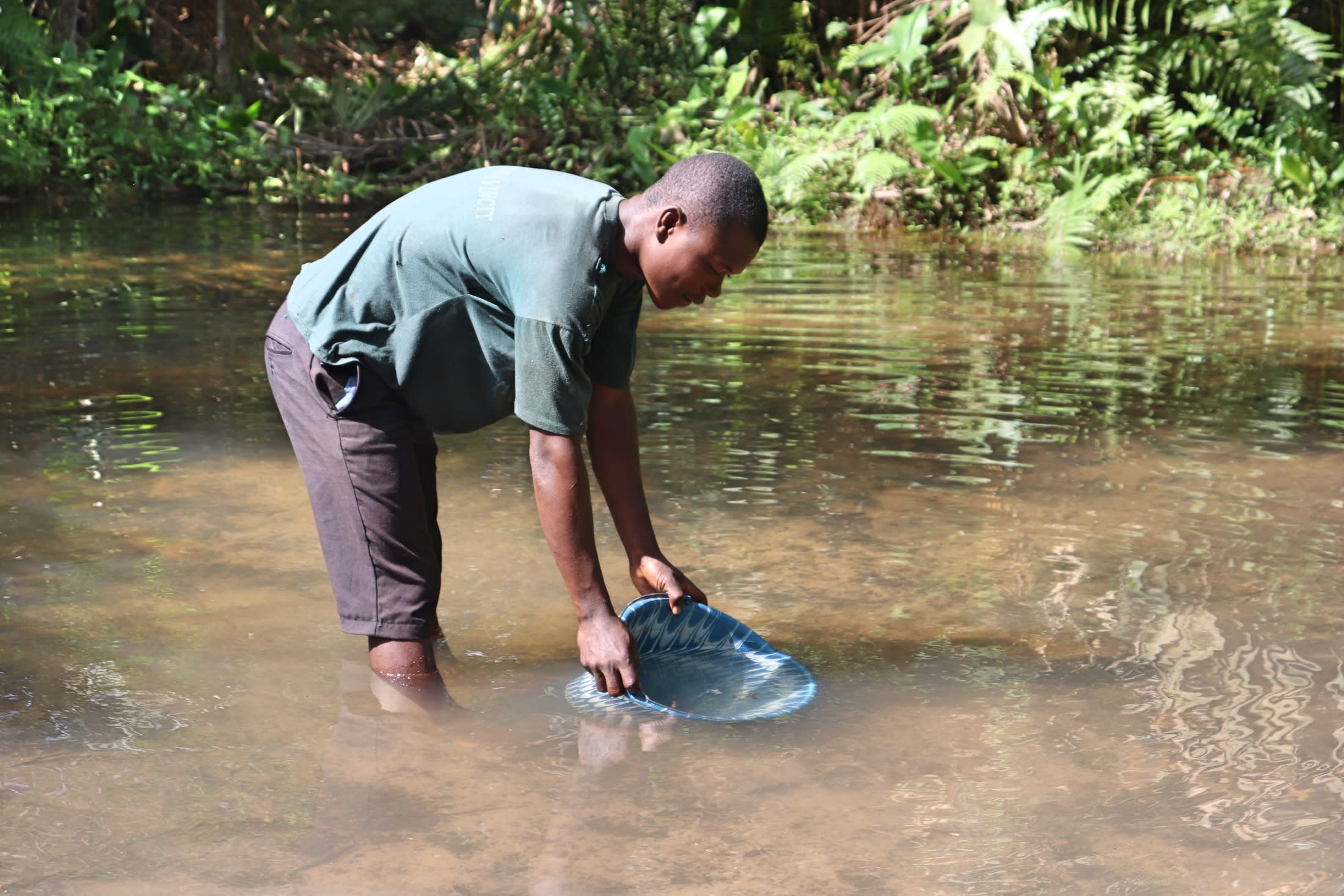December, 2022: Thawuya Community Well Complete!
We are excited to share that there is now a safe, reliable borehole well at Thawuya Community. As a result, the community members no longer rely on unsafe water to meet their daily needs. We also conducted hygiene and sanitation training, which focused on healthy practices such as handwashing and using latrines.

"We have always longed to have access to clean water, but where could we get it? We have been suffering so much from diseases like dysentery, diarrhea, and typhoid fever. Diarrhea was rampant among children because of drinking dirty water, but this is no more. We are grateful to you for the new water point," said 35-year-old Kadiatu Kamara.

"Today, I feel happy about our new water point. I believe that this water source will help me to learn good hygiene that will benefit me, [not] just myself but the entire population in this community," said 15-year-old Alie S. "All I need to do now is come to the water point to fetch water and prepare to go to school on time. So, I no longer go to school late."

We held a dedication ceremony to officially hand over the well to the community members. Several local dignitaries attended the ceremony, including representatives from the government that oversees Water, Sanitation, and Hygiene in the Port Loko District. Each official gave a short speech thanking everyone who contributed to this water project and reminding the community members to take good care of it. Then, Kadiatu and Alie made statements on their community's behalf. The ceremony concluded with celebration, singing, and dancing.

New Well
The drill team arrived the day before beginning work. They set up camp and unpacked all their tools and supplies to prepare for drilling the next day. The community provided space for the team to store their belongings and meals for the duration of their stay. The following day, work began.
Our team dug two pits next to the drill rig, one for the drill’s water supply and another for what the drill pulls out of the borehole. In some cases, we order a private supplier to deliver the water for drilling since water access is already challenging.

Day one of drilling began as the team mixed water with bentonite, an absorbent clay, in the two dug pits. Next, the team fixed a four-inch carbide-tipped bit to the five-foot-long drill stem. They started the mud pump to supply water to the drill rig so that drilling could begin!
After putting each five-foot length of drill stem into the hole, the team took material samples. We labeled the bags to review them later and determine the aquifer locations.

On the second day of drilling, the team expanded the hole and cleared it of mud. After reaching a total depth of 23 meters, the team forcefully pumped clean water into the well to remove any dirt and debris from the drilling process. We then protected the screened pipe by adding a filter pack. The team hoisted the temporary drilling casing to fortify the pipes with cement.

Chlorination.
Next, we bailed the well by hand for three days before conducting a yield test to verify the water quantity. This well has a static water level of 10 meters. With these excellent results, we installed a stainless steel pump. Water quality test results showed that this was clean water fit for drinking!

New Knowledge
Before conducting any hygiene training, we called and visited the local water user committee to understand the community’s challenges and lack of sanitation facilities. We shared the findings from our discussions with the committee members to help them make the necessary adjustments before the training began. For example, we identified households without handwashing stations or ones that may need to repair their latrines. With this information, community members worked together to improve hygiene and sanitation at home.
After this preparatory period, we scheduled a time when members from each household using the water point could attend a three-day hygiene and sanitation training. We then dispatched our teams to the agreed-upon location to hold the meeting.

Training topics covered included handwashing and tippy taps, good and bad hygiene habits, disease transmission and prevention, COVID-19, worms and parasites, proper dental hygiene, proper care of the well's pump, keeping the water clean, the cost recovery system, the importance of using dish racks and clotheslines, the importance of toilets, keeping latrines clean, balanced diets, the diarrhea doll, and HIV and AIDS.

Field officer Moses Kebbie shared, "Good and bad hygiene was the most memorable topic during the training. As soon as the facilitator showed the poster that has the image of a nursing mother taking her child with her to the latrine, Adama Kamara, a lactating mother, bowed her head in guilt. Her mother-in-law Ya Dora Kamara immediately pointed at her, saying, 'This is Adama Kamara's existence.' The old woman described the story of how her daughter-in-law usually takes her baby everywhere, even to the latrine.
"Adama Kamara tried to defend herself by saying that, with respect to the issues related to her kids, she trusts no one, not even her family. Everyone at the training shouted at Adama Kamara’s statement by correcting her that she has no right to take the child of that age to the latrine because the child will one day go out in search of her there, and if the child could not find her there, the child may mistakenly fall in the toilet pit, which can result [in] danger. After a long discussion with the participants, the matter was resolved, and at the end, Adama Kamara finally accepted the truth and promised to stop such acts."

"The training is valuable to me because it teaches me how to keep my environment clean, and this will have an impact [on] me by following the exact teachings that the team has taught me," said Kadiatu Kamara, quoted earlier. "It is a great privilege to have such [a] training. We are in the habit of leaving our places filthy, even in places where we store our drinking water. Thereafter this training, I am very sure that changes will take place in my community that will help us deviate from sickness. If only we follow this new knowledge, it will be good for us."
Conclusion
This project required a substantial collaboration between our staff, our in-country teams, and the community members themselves. When an issue arises concerning the well, community members are equipped with the necessary skills to rectify the problem and ensure the water point works appropriately. However, if the issue is beyond their capabilities, they can contact their local field officers to assist them.
Also, we will continue to offer them unmatchable support as a part of our monitoring and maintenance program. We walk with each community, problem-solving together when they face challenges with functionality, seasonality, or water quality. Together, all these components help us strive for enduring access to reliable, clean, and safe water for this community.
With your contribution, one more piece has been added to a large puzzle of water projects. In our target areas, we’re working toward complete coverage of reliable, maintained water sources within a 30-minute round trip for each community, household, school, and health center. With this in mind, search through our upcoming projects to see which community you can help next!
Thank you for making all of this possible!




 Borehole Well and Hand Pump
Borehole Well and Hand Pump
 Rehabilitation Project
Rehabilitation Project






























